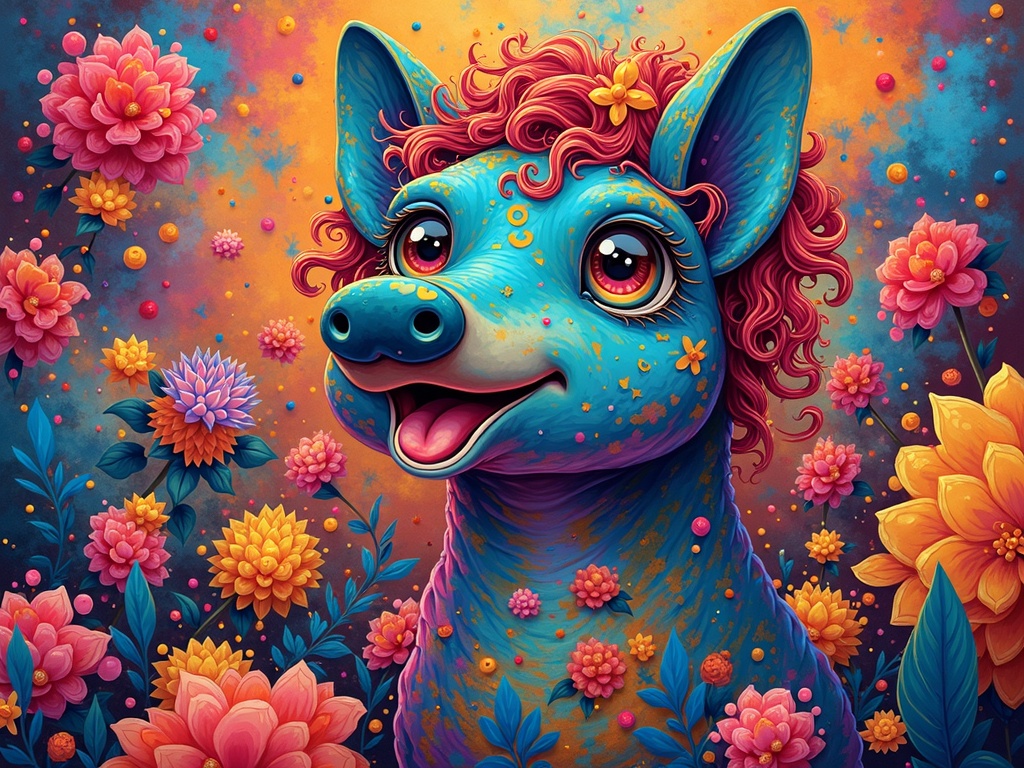The Artful Mashup: Exploring the Power of Combining Different Art Styles
Imagine a world where the rigid lines of Cubism dance with the fluid strokes of Impressionism, or where the stark realism of photography intertwines with the fantastical elements of Surrealism. This isn’t a dream; it’s the exciting reality of combining different art styles, a practice that’s been pushing creative boundaries for centuries and continues to inspire artists today. It’s about more than just experimentation; it’s about forging new visual languages and expressing ideas in ways never before imagined.
Why Combine Art Styles? The Creative Catalyst
Blending artistic styles isn’t just a trendy gimmick; it’s a potent tool for artistic innovation and deeper expression. Here’s why artists choose to walk this path:
- Innovation and Originality: In a world saturated with images, combining styles offers a way to create something truly unique and break free from the confines of tradition.
- Enhanced Expression: Different styles evoke different emotions and convey different meanings. By merging them, artists can create richer, more nuanced narratives.
- Conceptual Depth: Juxtaposing seemingly disparate styles can create thought-provoking contrasts and challenge viewers’ perceptions.
- Problem-Solving: Sometimes, a single style simply isn’t enough to communicate a complex idea. Combining styles can provide the necessary tools to overcome creative roadblocks.
- Personal Voice: Discovering your own unique blend of styles is a journey of self-discovery and a way to stamp your personal mark on the art world.
Historical Examples of Style Fusion: A Rich Tapestry
The idea of mixing styles isn’t new. Throughout history, artists have drawn inspiration from diverse sources and fused them into groundbreaking works:
Renaissance Synthesis
The Renaissance itself was a fusion of classical Greek and Roman aesthetics with emerging humanist ideals. Artists like Leonardo da Vinci blended scientific observation with artistic expression, resulting in masterpieces that remain timeless.
Rococo’s Playful Borrowing
Rococo artists exuberantly combined painting, sculpture, and decorative arts to create immersive and theatrical environments, blurring the lines between different disciplines.
The Surrealist Mix
Surrealism thrived on the juxtaposition of dreamlike imagery with realistic techniques, creating unsettling and provocative works that challenged the viewer’s sense of reality. Think of Salvador Dali. [internal_link]
Pop Art’s Appropriation
Pop artists like Andy Warhol famously appropriated imagery from popular culture and advertising, merging high and low art forms to comment on consumerism and celebrity culture.
Modern and Contemporary Approaches to Style Blending
Today, artists have even more tools and influences at their disposal, leading to an explosion of stylistic experimentation:
- Digital Art Mashups: Digital tools allow artists to seamlessly blend painting, photography, graphic design, and 3D modeling into cohesive artworks.
- Street Art Fusion: Street artists often combine graffiti, stencil art, muralism, and other techniques to create dynamic and politically charged public art.
- Illustration Hybrids: Illustrators are increasingly mixing traditional drawing and painting techniques with digital illustration, resulting in uniquely textured and expressive imagery.
- Abstract Expressionism’s Legacy: Contemporary abstract artists continue to explore the fusion of different abstract styles, pushing the boundaries of color, form, and texture.
Case Studies: Artists Who Masterfully Combine Styles
Let’s delve into the work of some contemporary artists who are pushing the boundaries of style blending:
Wangechi Mutu: Collage and Painting
This Kenyan-American artist creates stunning collages that combine painted figures with images from fashion magazines, medical diagrams, and ethnographic sources. Her work explores themes of colonialism, identity, and the female body with striking visual power.
Shepard Fairey: Street Art and Graphic Design
Fairey is best known for his Obey campaign and his Barack Obama Hope poster. His work seamlessly blends street art aesthetics with graphic design principles, creating visually striking images with a strong social and political message.
James Jean: Illustration and Fine Art
Jean’s intricate illustrations combine elements of classical painting, comic book art, and Japanese woodblock prints. His work is characterized by its lush details, vibrant colors, and dreamlike atmosphere.
Techniques and Strategies for Combining Art Styles
Ready to try your hand at blending styles? Here are some techniques and strategies to get you started:
- Identify Core Elements: Begin by identifying the key characteristics of each style you want to combine. What are the defining features of Impressionism, for example?
- Find Common Ground: Look for shared elements or underlying principles that can bridge the gap between different styles. Perhaps both styles utilize bold color palettes.
- Juxtapose and Contrast: Use contrasting elements to create visual tension and intrigue. For example, combine realistic portraits with abstract backgrounds.
- Experiment with Media: Don’t be afraid to mix different media, such as combining watercolor painting with digital collage or incorporating found objects into a sculpture.
- Embrace the Unexpected: Be open to happy accidents and unexpected results. Sometimes the most exciting discoveries happen when you step outside your comfort zone.
Challenges and Considerations
Combining art styles isn’t always easy. Here are some potential challenges to keep in mind:
- Maintaining Cohesion: It’s crucial to ensure that the different styles work together harmoniously and don’t feel disjointed or chaotic.
- Avoiding Gimmickry: The goal is to create something meaningful and innovative, not just to show off your technical skills.
- Knowing Your Influences: Understanding the history and context of each style is essential for using them effectively.
- Developing Your Own Voice: It’s important to find your own unique way of blending styles, rather than simply copying existing approaches.
The Future of Style Blending: Limitless Possibilities
As technology advances and cultural exchange becomes increasingly fluid, the possibilities for combining art styles are truly limitless. We can expect to see even more innovative and unexpected fusions in the years to come, challenging our perceptions of art and expanding the boundaries of creative expression. From AI-assisted art generation to the integration of virtual and augmented reality, the future of style blending promises to be a wild and exciting ride. The key is to remain open-minded, embrace experimentation, and never stop exploring the vast potential of artistic expression. The canvas is yours – what will you create?
